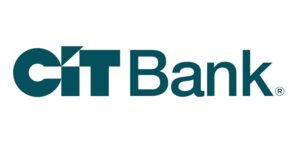
If you are currently investing in a CD, it is important to know if you’re getting the best rates on the market. However, if you already opened a CD account, then you might be wondering if you can still deposit funds in.
Typically you would not be allowed to add funds once it’s opened. However, there are some other ways that you can do it. Continue reading below to see how you can add money to a CD over time.
How Certificates of Deposit Work
Certificates of deposit is a product offered by banks and credit unions that provides an interest rate premium. You are required to deposit a lump-sum of money for a fixed amount of time in order to get a fixed interest rate for the entire term.
You will receive interest earnings over the whole term. An added benefit to CD’s is that your CD rate will remain the same even if there’s a federal interest rate cut. This is why CD’s are a great secure option for short-term savings plans.
For better interest rates, you might be attracted to opening a longer term. However, you won’t be able to add money to it later on. For more flexibility, here are some options.
1. Add-On CDs
Add-on CDs allows you to add more funds in throughout the term. Depending on the conditions of your bank, you might only be allowed to add more funds once. Keep in mind that only a few banks will offer add-on CDs.
With this, your interest rate will be locked-in for the entire term. Remember that you will not be able to withdraw until the CD life matures.
Banks with add-on CDs include:
- Associated Bank 12-Month Add-on CD ($100 minimum)
- Bank5 Connect 24-Month Investment CD ($500 minimum)
- First Horizon Bank Add-on CD ($500 minimum)
- BMO Harris 1-Yr Add-on CD ($1,000 minimum)
As always, check to see if you are getting the best interest rate possible. If the interest rate is really low, the better option would be to open a traditional CD with a higher rate.
2. Create a CD ladder
Being that there is no limit to how many CDs you can open, you could always just open a new CD account when you want to deposit additional funds in. As always, check at different banks to see the difference in rates.
Creating a CD ladder means investing into multiple CDs with different maturity dates. This way, you are able to control the amount and term life when adding money into your CD plan.
Having CD’s with different mature rates makes it so that your funds won’t all be stuck at once, giving you a consistent cash flow. After the CD matures, you can withdraw the money or reinvest into a new CD, making it a whole cycle. If you see that interest rates increase, then you can look for a new CD with a higher rate.
3. Use a High-Yield savings account
Put your savings into a high-yield savings account instead of a CD. Here, you can add funds whenever with no limit, but you are limited to 6 withdrawals per month. Understand that Online banks will offer better interest rates than traditional banks. These banks give competitive rates that are comparable to CD rates.
 |
 |
Bottom Line
Before you commit to a CD, consider all of your options. Once you commit, you won’t be able to withdraw the funds in there. Keep in mind that CDs are for the extra savings that you won’t need immediately.
Make sure you have a separate emergency fund in a regular savings account that you can access at any time. For more information on Banking, check out the rest of our bank guides right here on HMB! You can also read on the latest Credit Card Bonuses.




Leave a Reply